
Robinson R22 - History and technical description
On March 16, 1979 the Federal Aviation Administration (FAA) issued the Robinson R22 type certificate to Frank Robinson. Forty years after its debut in the civil market, we retrace the story of one of the most popular helicopters and its talented inventor.
Frank Robinson’s childhood and studies
Franklin Davis "Frank" Robinson (1930-2022) was born on January 14, 1930 in the small village of Carbonado located about 80 km SE of Seattle (Washington).
The youngest of four children he grew up in the very difficult period that followed the Great Depression of 1929.
Like millions of Americans he had a difficult childhood. His father who was an unemployed coal miner supported his family by hunting, fishing and growing vegetables.
The two-room school on Whidbey Island had neither running water nor electricity.
Since he was a child Frank Robinson was very interested in mechanics. At the age of nine or ten he saw in the Seattle Post Intelligencer an image of Igor Sikorsky at the controls of the VS-300.
The idea that an aircraft could hoover in mid-air fascinated the boy, and set the course for his life’s work. Since that moment he undertook his studies with much more determination with the hope to enter one day in the world of the rotary-wing.
Among other things as a teenager he gave his own contribution to the family’s budget by hunting mink to sell their furs. At the age of 16, during the summer holidays, he obtained permission to work on commercial vessels. That's how he managed to pay for his college studies and later university.
During the college years he obtained an airplane pilot license. Much later he then obtained the commercial helicopter pilot license.
Aeronautical engineer
In 1957 at the University of Washington he earned a Bachelor of Science in Mechanical Engineering (BSME), and that was for him a moment of great happiness and satisfaction.
After the university he attended graduate school at the University of Wichita (Kansas) as an aeronautical engineer. This city has a long-standing aviation tradition as some of the leading aircraft manufacturers such as Stearman Aircraft Corporation, Cessna Aircraft Company, Mooney Aircraft Corporation or Beech Aircraft Company were based here. In 1928 Wichita proclaimed itself "The Air Capital of the World".
In 1957 Frank Robinson bought a copy of Jane's All the World's Aircraft and wrote to several helicopter builders seeking for a job.
Charlie Seibel, who at the time worked on behalf of Cessna on the Cessna CH-1 Skyhook project, offered him the opportunity he was looking for. The young man was teamed together with a small group of 7-8 engineers and along with them he learned to do everything.
Although the CH-1 Skyhook had excellent performances to Frank Robinson that aircraft seemed too complicated and so even then after work and in his spare time he began to design a light two-seater helicopter.
Frank liked his job at Cessna but the salary was not very good and therefore he started looking around for alternative employment.
One day he read an advertisement in the Aviation week magazine. Umbaugh Aircraft Corporation was looking for an aviation test engineer in view of the certification of its Umbaugh U-18 Flymobile gyroplane.
Therefore after three and a half years he left Cessna to take on the new job. A year later considering the fact that from week to week he had to find a new bank to try to cash the company’s checks he decided to quit this manufacturer.
He then spent four and a half years at Mc Culloch Motor Company on the Mc Culloch J-2 gyroplane project, after which he was hired by Kaman and moved to Connecticut.
After a year he left this company to move to Bell Helicopter (which he still defines as a very gentlemen company) to deal with research and development. While working at Bell he earned a reputation as a tail rotor expert.
In 1969 he was hired by Hughes Helicopter Company to deal with various research and development tasks, including a new tail rotor for the Hughes 500 and the "Quiet One" program.
Among the helicopters then produced by this manufacturer there was also the Hughes 300 which at the time with a price of 33'630 USD (1968) was one of the cheapest helicopters on the market along with the Brantly B-2B (30'900 USD).
Frank Robinson's attempts to persuade his employers of the soundness of his ideas for a low-cost personal helicopter and the existence of a civilian market fell on deaf ears. Nowadays as we know this was his fortune.
At that time, the main American manufacturers were engaged in the production and development of new helicopters for the US armed forces involved in the Vietnam war.
With some rare exceptions, most of the helicopters used by civilian operators were derived from military models.
Birth of the Robinson Helicopter Company (RHC)
As it happened, Frank Robinson became friends with C. K. "Gus" LeFiell, a retired business man who founded LeFiell Manufacturing Company in 1930, a Santa Fe Springs company specialized in the manufacture of precision tubular products such as for example the push-pull tubes of the aircraft.
"Gus" LeFiell, whom Frank Robinson describes as a witty person with extraordinary abilities, was an expert machinist who, among other things, was interested in helicopters. After his retirement he moved to the island of Kauai (Hawaii) where he set up a small workshop. There he started (after asking Frank Robinson’s advice and opinions) the construction of a two-seat helicopter from a kit and obtained a pilot license.
"Gus" LeFiell became aware of Frank Robinson’s projects for a small personal helicopter and apparently he convinced the latter to quit his job at Hughes to start his own business offering his financial support.
As stated by Frank Robinson that wasn’t at all an easy decision because he was not too long divorced, had three children and no money.
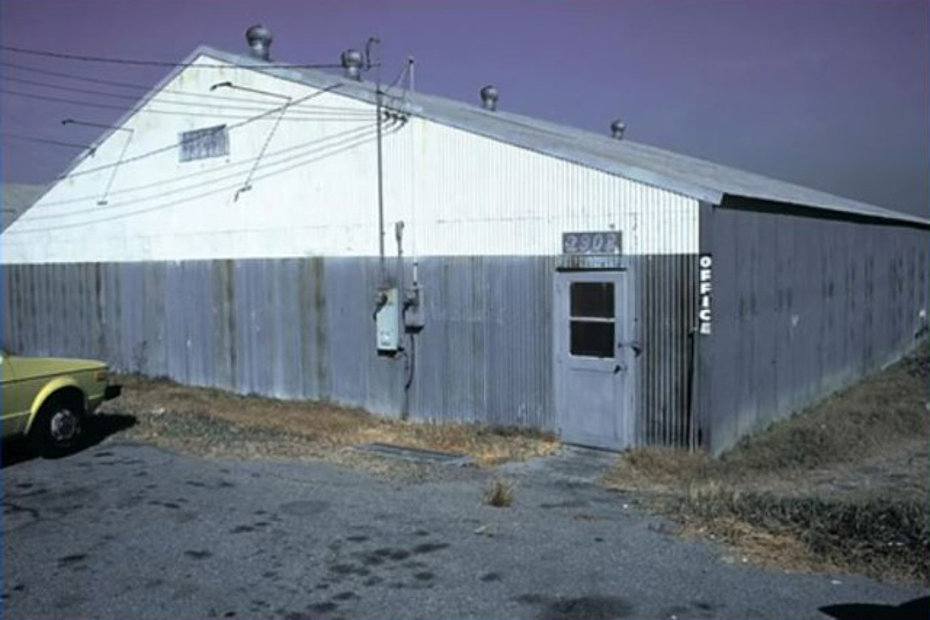
Robinson Helicopter Company was officially founded on June 29, 1973. Its first postal address was at Rancho Palos Verdes in Longhill Drive at the number 27886 which was the home of the then forty-three years old Frank Robinson.
"Gus" LeFiell at the age of 75 assumed the position of vice-president of the company.
In an interview published in an aviation magazine in 1985 Frank Robinson declared recalling his beginnings: "In the course of about 17 years I developed the necessary skills in various fields such as flight tests, design, stability and control, stress analysis, fatigue testing and construction. Moreover I was firmly convinced that my project was good and above all it was not in competition with anyone else”.
Construction of the prototype
At first Frank Robinson started to design in his living room the tail rotor assembly and began the construction in his small garage. The sheet metal parts were mostly manufactures in his garage where he had installed a small workshop.
Sometime later some neighbors started to complain when they saw his car always parked outside while a motor was hanging from the garage ceiling and strange noises were heard. The neighbors feared he was starting a business in the quiet residential neighborhood. The zoning commission ordered him to cease his activities and to pay a fine.
Fortunately everything ended without serious consequences when, after about a year and a half, the assembly of the prototype was transferred into a small hangar rented at Torrance Municipal Airport (nowadays Zamperini Field in honor to Louis Silvie Zamperini (1917-2014), an Olympic distance runner, a WW2 veteran and a Christian evangelist, best known for being a Japanese prisoner who survived despite the terrible period of the imprisonment. His life inspired Angelina Jolie who produced and directed the movie Unbroken).
Inside the hangar which had neither plumbing nor heating, an office with plywood and drywalls was created. Then drawing boards were installed and construction work continued. At that time, the young company hired the very first employees.


It took about two years to complete the prototype. Blueprints for the new components were sent by mail to "Gus" LeFiell; these where then manufactured and carried by him when he returned to California from Hawaii.
Regarding the construction of the prototype here is a funny tale. As Frank Robinson said the length of the tail rotor blades was determined by a practical question: it was the maximum size that could be fitted in his kitchen oven and where he cured the bonding at the appropriate temperature.
The prototype of the Robinson R22 with civilian call sign N67010 (s/n 001) was completed under the constant supervision of the FAA personnel during the summer of 1975 and made the first test flight on August 28, 1975.
For that occasion at the controls there was the same Frank Robinson who stated in an interview that “The first test flights were so flawless, they were eerie.”
In its original configuration the helicopter had a maximum takeoff weight of 558 kg (1,230 pounds) and was powered by a Lycoming O-235-C2C engine delivering a maximum power of 86/115 kW/hp at 2,800 rpm.

When the first prototype had logged about ten hours of test flight the famous magazine Aviation week & space technology in its edition dated October 6, 1975 published a short article reporting that the Californian Robinson Helicopter Company (then still almost totally unknown) had started flight tests of a prototype and that the manufacturer intended to introduce it on the market at a sale price of about 18-19,000 USD.
With that price tag the new two-seater designed to be simple and economical was in direct competition with the light aircraft market.
That article captured the interest of several operators all over the world and many of them contacted the newly founded company for more information.
The certification program progressed slowly given that only one prototype was available for the tests.
The prototype was seriously damaged on December 22, 1975 during a "power-off" autorotation exercise at Torrance airport when it had logged 32 hours of flight. The NTSB's (National Transportation Safety Board) report indicates that the cause of the accident was attributable to the fact that “the pilot (Frank Robinson himself was at the controls) failed to maintain adequate rotor rpm”. The observation expressed in the report is interesting: "Remarks - One second delay autorotation requested for FAA certification".
On this important point, which has always been at the center of the criticism of the R22’s detractors we will come back later.
The helicopter was repaired and the certification program resumed.
On January 31, 1976 issue, Flight International magazine dedicated a short article entitled "Robinson R22 - A low-cost helicopter" which indicated that certification was expected for the following summer, while mass production would begin during 1977. However for several reasons the certification program took longer than expected.
During 1976 the lack of power became more and more evident, that’s why after about 35 hours of test flying the power plant was replaced by a more powerful Avco-Lycoming O-320-A2C delivering a power of 112/150 kW/hp at 2,700 rpm.
This increase in power involved the replacement of the original centrifugal clutch with a new one manufactured by Borg-Warner that included an electric actuator developed by RHC which tensioned the four drive-belts.
The Robinson R22 made one of his first official appearances during the 29th edition of the Helicopter Association of America which took place between 6-9 February 1977 in Anaheim (California).
A few weeks later, the company claimed to have accumulated a total of 248 orders for the new helicopter.
The first buyers deposited each 300 USD to reserve their R22 of which only 150 USD were refundable in case of withdrawal. The price of the R22 was set at 27,500 USD, while to new customers it would have cost 29,000 USD.
At that time, Flight International reported that Robinson Helicopter Company was planning to produce 500 aircraft a year. The statement seemed to many rather risky. However over the years, production volume increased significantly to reach and even exceed forecast quantity. In 2008 the company built 893 helicopters!
Unfortunately on April 29, 1977 the Robinson 22 N67010 had another accident that could have cost the life of the test pilot Robert "Bob" Golden (1948-2006), a highly decorated veteran of the Vietnam War hired by Robinson Helicopter Company. While flying over the Pacific Ocean near Rancho Palos Verde the helicopter suddenly had a tail rotor failure. By radio the pilot in an absolutely calm and natural way announced "I must have lost the tail rotor and I think I will end up at sea". The helicopter made some spirals and ended up in the cold waters of the Pacific not far from the coast. Luckily Bob Golden managed to leave the cabin, emerge from the water and get to safety.

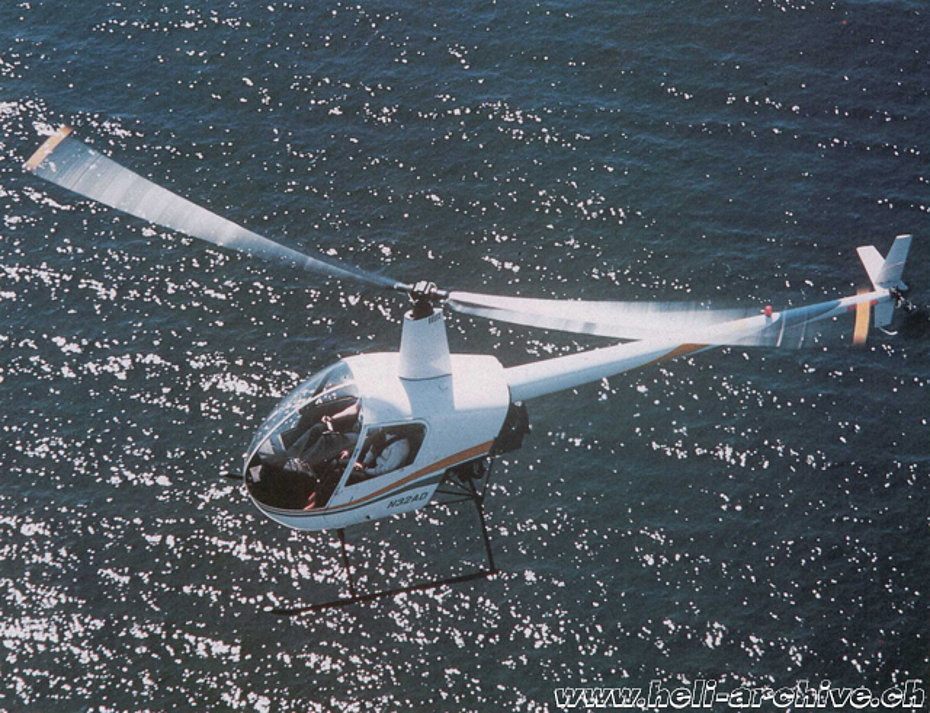
That incident could have meant the premature end of the young company, so it was absolutely necessary to recover the helicopter and understand exactly what had happened.
After a few days, thanks to the help of divers, the aircraft was located and retrieved.
An accurate examination made it possible to establish that the accident was caused by a failure of the casting that mates the tail rotor gearbox and stabilizing fins to the conical monocoque aluminum tail boom. The vertical fin detached from its support and then struck the tail rotor blades.
The component was then redesigned and strengthened. Except for the avionics, most of the components of the helicopter were recovered and with these it was possible to build the second prototype that received the call sign N32AD (s/n 002). Test flights were then resumed.
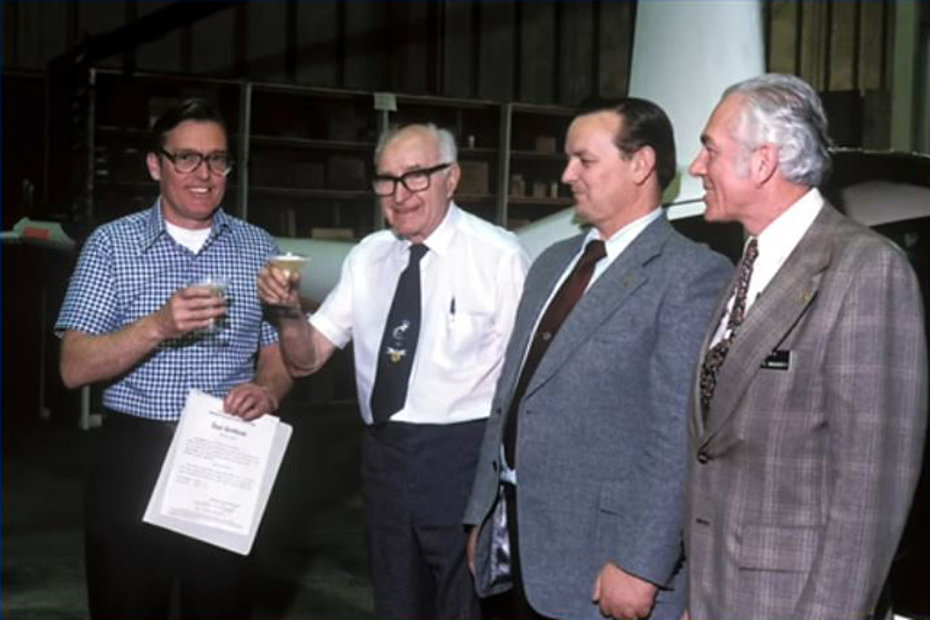
With them two delegates of the FAA (RHC)
In January 1978 Robinson Helicopter Company announced that it had leased a factory with a surface of approximately 4’100 square meters (44,000 sq ft) at 24747 Crenshaw Boulevard, including corporate offices and space for the manufacturing in series of the helicopter at Torrance Municipal Airport. One of the strict conditions for the signing of the lease was that the firm’s helicopters had to pass the City of Torrance’s strict new airport noise regulations, which they did.
At about the same time the company ordered the material needed to manufacture 222 helicopters while the list of orders continued to grow. The price set three months prior to delivery meanwhile rose to 33,850 USD.
FAA certification
After a little more than three years (the request was submitted on January 6, 1976) of tests, data analysis and reports on March 16, 1979 the Robinson R22 obtained the type certificate H10WE from the FAA, the agency of the US department of transport in charge of issuing the type certificate (or certificate of homologation) when the compliance of an aeronautical product (aircraft, engine or propeller) to the airworthiness requirements established by the regulations in force has been demonstrated.


Among the pilots who flew the R22 during the certification program there were Steven R. Egger who later became president of Pacific Wing & Rotor Inc. based in Long Beach. This company was the first to purchase an R-22 (s/n 3) in Autumn 1979. Another test pilot was Joseph John "Tym" Tymczyszyn, an American WW2 pilot, and test pilot for the United States Army Air Corps and the FAA.
On the basis of the information gathered, the R22 certification program is estimated to have cost about 1 million USD, a low figure, particularly in light of the fact that the helicopter was certificated under the stringent technical requirements set by Federal Aviation Regulations - FAR Part 27.
The latter set standards for helicopters of the normal category up to a maximum takeoff weight of 3,175 kg - 7,000 pounds - and up to a maximum of 9 passengers.
As “Gus” LeFiell, who was a seasoned businessman, said, the hardest part, that is, the launch of the production in series with relative profits was still to come.
The company in fact encountered great difficulties in finding investors, and this despite the fact that the opinions of the specialized press were still generally positive. Frank Robinson stated that “It was horribly difficult to find investors, virtually impossible”.
The helicopter seemed well conceived and reliable and apparently did not receive criticism. The slowness with which the certification program proceeded was intended by the customers as a synonym of serious and accurate work.
The sales price of the R22 (initially estimated at around USD 18-19,000) rose to USD 39,850, which was twice the amount initially anticipated.
First deliveries
The first delivery of a Robinson R22 occurred in October 1979 when the third helicopter (s/n 003) with call sign N101WR was officially handed over to Pacific Wing & Rotor Inc. which used it for training flights. The fare for instruction flights was 55 USD/hour. At that time the president of that company was Timothy "Tim" C. Tucker who later assumed the role of chief instructor on behalf of Robinson Helicopter Company.

At that time the Torrance based company manufactured one Robinson R22 a week, far too little if we consider that in the backlog there were 587 orders!
However, the company grew rapidly so that rate of production was increased and delivery times reduced within reasonable deadlines.
In 1979, 8 aircraft were delivered, the following year 71 and then 151 in 1981. The 100th R22 was delivered in January 1981.
That year the original R22 was phased out shortly after the introduction of the R22HP (High Performance). This model was powered by a 118/160 kW/hp Avco-Lycoming O-320 A2C instead of 112/150 kW/hp of the O-320-A2B.
Both engines were flat-rated at 91/124 kW/hp, but the HP maintained its rated power to a somewhat higher altitude. In ISA conditions at MTOW the standard R22 hovers IGE at 1’980 meters (6,500 ft) while the HP hovers at 2’530 meters (8,300 ft); OGE values are 1’400 meters (4,600 ft) and 1’980 meters (6,500 ft) respectively.
Initial problems with the main rotor blades
The commercial success of the Robinson R22 ran the risk of being seriously overshadowed after some serious accidents caused by structural problems in the construction of the blades.
The first occurred on May 3, 1980 in Rancho Palos Verdes during a training flight and involved N9011M (s/n 005) operated by South West Skyways Inc.
Waiting for the causes of the accident to be clarified, the entire fleet of the R22 up to then manufactured (just over thirty) was temporarily grounded.
The NTSB investigation found that the accident that caused the death of the flight instructor and his pupil was due to a delamination of the bonded blade skin and was traced to improper preparation of the skin by a vendor.
Non-surveillance of the manufacturing process of the blades (at that time the main rotor blades were not manufactured by RHC) led to a possible impairment of the blade integrity. The investigations revealed that the blades had been repaired twice, the first on January 30, 1980 and again on May 1, 1980.
The ban was lifted when it was determined that the helicopter design itself was not at fault.
The second serious accident due to structural problems occurred on August 31, 1981 in Granby, Hartford County, Connecticut. In that case at the origin of the accident which involved the R22 N9056D (s/n 133) there was the rupture of the main rotor blade grip with consequent separation in flight of a blade from the hub due to a fatigue fracture.
This incident left no escape options to the 22-year-old pilot and his passenger.
To avoid similar incidents that particular component was redesigned to be four times stronger than design loads required.
Despite these accidents the attractive price and the low operational costs made the Robinson R22 very popular. Within a few years many flying schools purchased this helicopter and many amateur pilots did so.
Safety measures
Unfortunately, the list of incidents (among these several due to "mast-bumping" a theme that will be discussed later in this article) in which the two-seater was involved began to increase.
In 1982 Robinson Helicopter Company introduced the “flight instructor safety course” which was the first of its kind to be approved by the FAA as a CFI revalidation clinic and has been credited with reducing the R22’s accident rate in flight schools by nearly 80%. A close examination clearly showed that the primary cause of accidents was poor or inadequate flight instruction. Most of them in fact occurred with low-time pilots.
The company taught instructors and new pilots about the R22's peculiarities.
Higher requirements were also introduced for commercial instructors, and this was also for the purpose of lowering insurance cost. These measures, along with the publication of additional training material and the issuance of safety notes were extremely effective in reducing R22s accidents. A similar effort was made to improve the knowledge and operating practices of private owners.
The FAA and NTSB made several recommendations, and finally in 1995, the FAA issued “Special Federal Aviation Regulation No. 73 (SFAR 73) - Robinson R-22/R44 Special Training and Experience Requirements”.
SFAR No. 73 requires special training and experience for pilots operating the Robinson model R22 or R44 helicopters in order to maintain the safe operation of these helicopters. SFAR No. 73 also requires special training and experience for certified flight instructors conducting student instruction or flight reviews.
By doing this the accident rate has significantly decreased to align more with the rest of the general aviation community.
Ten years after the first flight of the prototype, on July 26, 1985 the 500th R22 (N50022) was delivered to Sloane Helicopters Ltd.
Robinson’s relentless determination earned him the respect of both colleagues and competitors. Robinson retired in 2010 at age 80. The company continued under the leadership of Frank’s son, Kurt Robinson
In December 2016, the Californian company cut the milestone of the 12,000 helicopters sold, confirming its position as world leader in the light helicopter market. Meanwhile more than 4,800 R22s have been manufactured.
After dedicating a lifetime to helicopters, the founder of the company, who had in the meantime built over 13,000 aircraft, passed away peacefully at his home in Rolling Hills, California, on 12 November 2022 at the age of 92.

Civil employment
The helicopter is designed to be primarily used for pilot training, private transportation and activities such as aerial photography and observation. In Australia, the R22 is in one of the most popular helicopters predominantly used for cattle mustering.


Technical description
The R22’s success was not only due its attractive price, but also the fact that since the beginning Frank Robinson focused his attention on design simplicity and low maintenance requirements.
In the search for the simplest and most adequate solution, the designer was inspired too by the construction of large trucks used for long distances transports.
For example grease fittings have been completely eliminated by using Teflon-lined or sealed ball bearings. The number of bearings required has also been significantly reduced. For instance the tail rotor drive shaft has only one lightly loaded sealed ball bearing.
Each component was originally designed to have a programmed operational life of at least 2,000 hours (or 12 years) or on-condition, i.e. usable as long as conditions permit.
The components subjected to stresses were designed to have a high safety standard, much higher than that required for certification.
Construction
The fuselage is built in three sections: the cabin, the central section and the tail boom. The cabin, whose primary structure is made of light alloy with fiberglass reinforcements, is provided with a large glazing made of Plexiglas panels and internally has a soundproofing coating. Access to the cabin is via the two hinged doors that can be easily removed when necessary. Within both doors made of fiberglass, thermoplastic, Plexiglas and light alloys we find a vent whose opening can be adjusted to ventilate the cabin. Doors can be closed by sliding a handle. The position of the seats cannot be adjusted. Each helicopter is supplied with a cushion which can be placed behind the pilot’s back to position him forward. This allows shorter pilots to reach the pedals. A baggage space is located under each of the seats with a maximum capacity of 23 kg (50 lbs). The original single ventral seat belts installed on the prototype were later replaced and are of the automotive type with three anchor points. Visibility is good in all directions. The space in the cabin is rather limited: the maximum width is 112 cm.

For inspections of the flight controls and other components there are removable panels between the two occupant seats as well as behind and under the cabin where two landing lights are mounted in the front. The instrument panel hinges up and aft to provide access to the battery mounted, originally in the nose, while in later versions the battery was relocated in the central section.
Central section
The central section built with welded steel tubes is separated from the cabin by two stainless steel firewalls, one located forward (to isolate the cabin) the other above the engine compartment. Here are housed the engine with its accessories, the transmission and the fuel tank. The engine compartment is partially faired with panels that can be opened or removed depending on the case for the pre-flight inspection or maintenance work. The helicopter has a landing gear built with steel tubes properly shaped to allow the absorption of kinetic energy in case of hard landing. The skids are made of light alloy. Hardened steel wear shoes are located on the bottom of each skid. These shoes should be inspected frequently, particularly if autorotation landings with ground contact have been performed.
The helicopter is normally maneuvered on the ground using ground handling wheels.
Tailboom
The tailboom (or tailcone) is a monocoque structure in which the aluminum skins carry the primary loads. It houses the long shaft that connects the main gearbox to the tail box.
A cruciform light alloy structure with fixed horizontal stabilizer and vertical fin is fitted to the tailboom along with the navigation beams. A bumper protects the tail rotor.
Flight controls
The first thing that catches your eye on board the Robinson R22 is undoubtedly the cyclic stick. It appears to be different but the grip moves the same as in other helicopters due to the free hinge at the center pivot. The person who is flying holds the grip at his end, lifting the other end clear of the other occupant’s lap. The cyclic grip can be adjusted at will in height and is connected to the central T-shaped bar located between the two seats. To facilitate entry and exit from the cabin it is sufficient to move the grip upwards. In flight the pilot lowers the grip of the cyclic at will by resting his forearm on his knee. Thanks to this funny-looking cyclic which resembles a primitive water pump, the floor in front of the seat is clear. In addition of course a number of parts are eliminated. All primary controls are actuated through push-pull tubes and bell cranks. The bearings used throughout the controls system are either sealed ball bearings or have self-lubricated Teflon liners. Balancing trim springs are incorporated in the cyclic and collective controls. The collective-up spring balances the rotor loads, allowing the pilot to remove his left hand from the collective during most flight regimes. Immediately to the left of the fuel mixture/idle cut-off control is a knob which is pulled upwards to tension a spring. This offloads the cyclic stick in cruising flight. This is the only pilot operated flying control trimming device in the aircraft. The controls are not servo-assisted, as the control forces are always light and easy.
From s/n 550 fine adjustments on the trim force is controlled by the knob located on the left side of the console. The collective pitch lever is also conventional with a twist grip throttle control. When the collective is raised, the engine throttle is opened automatically by an interconnecting linkage. Successive versions were equipped with an electronic governor which senses the engine rpm and applies corrective input forces to the throttle which maintain the design rpm. The governor is designed to assist the pilot in controlling the rpm in the normal operating range (between 97% and 104% rpm). It may not prevent over or under-speed conditions generated by aggressive flight maneuvers. For example coming to the hover from a steep descent requires the anticipated manual throttle adjustment to maintain rotor rpm. The governor is only active when the engine is running above 80% rpm and can be switched on or off by the pilot using the toggle switch located at the end of the right seat collective control. When the governor is not engaged a yellow caution light glows on the instrument panel. The pedals control the tail rotor through push-pull tubes and bell cranks.
Rotors
The R22 rotor is described in the flight manual as a "low-inertia rotor system". This creates a problem during simulated or actual engine failures, as the rotor rpm decays much more rapidly than those helicopters with heavier rotors.
This really unenviable quality is due to the fact that the entire rotor including the blades weighs only about 27 kg (60 pounds).
The two main rotor blades are all-metal with stainless steel leading edges, and are connected to the hub by individual flapping hinges. The hub is mounted to the shaft with a teeter hinge located above the coning hinges. The blades have a modified NACA 63-015 profile, are geometrically twisted and have a constant 18 cm string with a thick stainless steel leading edges to resist corrosion and erosion due for example to sand or dust. The core is in light alloy with a honeycomb structure. Along the trailing edge there is a so-called trim tab which serves for the alignment of the blades (tracking). The balancing of the blades is carried out by adding or removing thin steel strips applied to the end of the blade. Pitch change bearings in the blade grips are enclosed in housing which are filled with oil and hermetically sealed with a neoprene boot. The flapping and teetering hinges are fitted with Teflon bearings. Drop stops for the main rotor blades are designed to produce a teeter-hinge friction restraint which normally prevent the rotor from see-sawing during start and shut-down.
This rotor patented by Frank Robinson (the application to obtain the license was presented on October 4, 1976) is called "three hinged rotor system".

(font ECORYS Nederland BV)
After the afore mentioned accident occurred in August 1981, the main rotor blades were redesigned and approved by the FAA for a service life of 2,000 hours in January 1982. At RHC request a 300 hours limit was placed on old and, temporarily, new blades as well. When fatigue testing of new blades was completed the time limit was lifted and extended to 2’000 hours.
The modification also incorporated the addition of 725 grams (1.6 pounds) of ballast at the tip of each blade. This contributed to slightly increase the time required for the pilot to execute, in case of need, an autorotation.
However to date, based on the evaluations made by various flight safety agencies, the R22 still remains classified as one of the helicopters that have a low rotor inertia. A late reaction by the pilot means that the inertia of the rotor decreases quickly with consequences that could be unfortunately fatal.
It is no coincidence that among the pilots there is the saying "The rotor rpm are the stick of old age"!
The following table provides a comparison between various models.

In this respect the flight manual reads: “Caution: the R22 has a light, low-inertia rotor system. Most of the energy which is used for completing a successful autorotation is stored in the forward momentum of the aircraft and not in the rotor…”.
The dual needle instrument allows the pilot to monitor the engine/rotor rpm.
The tail rotor blades are manufactured with wrap-around aluminum skins, honeycomb spars, and forget aluminum root fittings. Pitch change and teeter-hinge bearings all have Teflon liners.
The blade’s incidence is controlled by means of connecting rods equipped with Teflon bearings (otherwise known as polytetrafluorethylene - English acronym PTFE). Bearings with PTFE coating, introduced in the 1950s, do not require greasing, since the coating itself is self-lubricating.
Transmission
Originally, the R22 used four separate v-belts running on multi-groove sheaves to transmit power from the engine to the upper pulley.
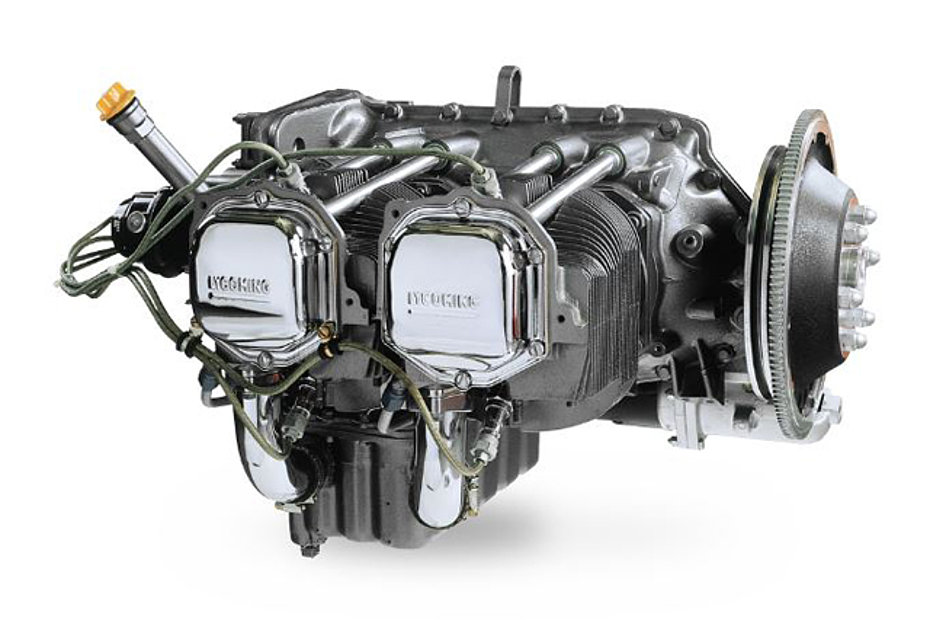

This system proved problematic, as individual belts would sometimes roll over in their groove and fail. As a temporary measure, in 1982, R22 operators received a kit from Robinson that was installed in the cockpit and on the belt tension actuator, isolating the tensioning circuits and locking the clutch/drive system at take-off tension. The problem was then definitively solved by replacing the four individual v-belts with two dual v-belts.
The inner shaft of the clutch transmits power forward to the main gear box and aft to the tail rotor.
A pilot-operated electrically-driven actuator is used to progressively tension the drive belts and enable power transfer from the engine to the rotor system. Before the engine is started, the clutch actuator is placed in the disengaged position, which leaves the v-belts slack and allows the engine to start and run freely without the load of the main and tail rotors.
The clutch actuator is vertically positioned between the upper and lower sheaves. A column spring arrangement within the clutch actuator senses the compressive load caused by increasing belt tension and stops the actuator motor when the tension reaches a pre-set value.
One of the FAA requirements to obtain the certification was the installation of an acoustic alarm that warns the pilot in case of low rpm or malfunction of the belt tensioning system.
Three flex coupling support the entire drive shaft and eliminate the need for any hanger bearing.
The main gearbox contains a single-stage spiral-bevel gear set which is splash lubricated. There are no cooling radiators or pumps. A cooling duct under the box is connected to the top of the engine shroud. The main gearbox is mounted to the airframe with four rubber mounts.
The main rotor to engine ratio is 1:5, while the tail/engine rotor speed ratio is 1.28/1.
Sensors in the gear boxes alert the pilot of the presence of metal filings in case of anomalies.
Engine
The engine is mounted horizontally in the lower section of the central section and is partially exposed both for better cooling and to facilitate pre-flight inspection and maintenance.
In its original version the Robinson R22 was powered by a four-cylinder Avco Lycoming O-320-A2B delivering a maximum power of 112/150 kW/hp. However the available power was deliberately reduced to 92.5/124 kW/hp at 2,652 rpm and this in order to extend the time between overhauls (TBO) up to 2,000 hours.
The engine driven cooling fan is enclosed in a cylindrical structure made of fiberglass and aluminum that forces the air towards the cylinders and the oil radiator. Other ducts force the cooling air towards the alternator and the main rotor transmission.
The induction air enters through an inlet on the right side of the helicopter and passes through a flexible duct to the carburetor air box. A hot air intake provides heated air. A sliding valve controlled by the pilot allows cold or warm air to flow to the carburetor through the air filter. By doing this the pilot prevents the risk of carburetor icing.
The 75 liters (19.8 USG) light alloy fuel tank is mounted above the engine. The fuel arrives to the carburetor by gravity and therefore no electric pump is required. The medium hourly consumption is about 35 liters (9.25 USG) . The Avco-Lycoming O-320-A2B uses 80/86 octane fuel.
The oil tank has a capacity of 7.5 liters (2 USG).
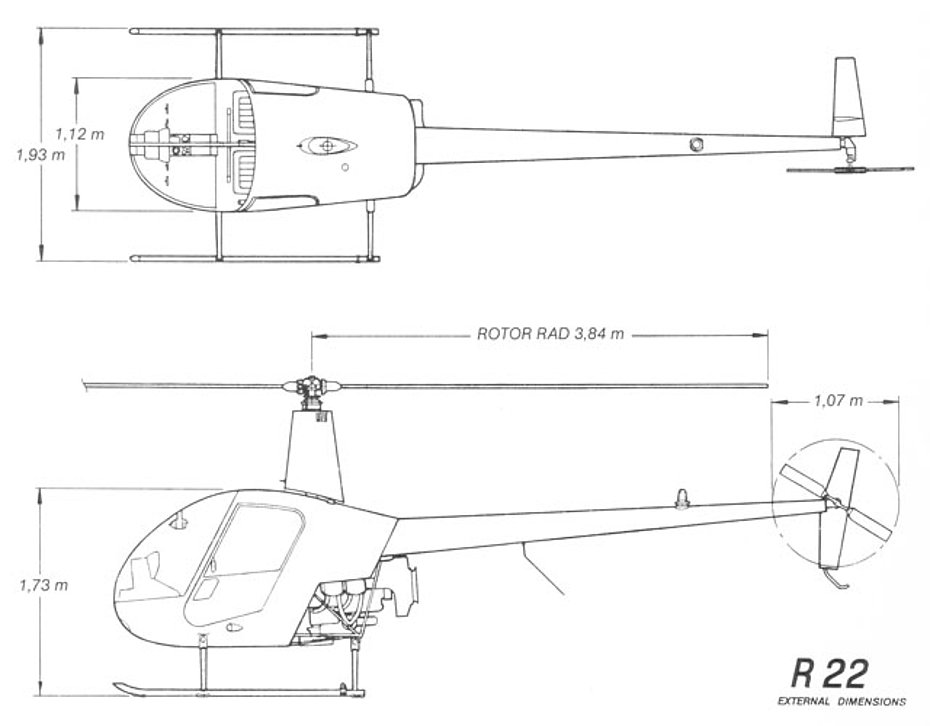
Optional equipment
The list of the optional equipment initially available included night flight lighting, cabin heating, a variometer, digital clock and various radio models.
Later on, governors, rotor brakes, leather interiors, auxiliary tanks, floats for amphibious use, barycentric hooks, auxiliary tanks, rotor brakes, full view doors, and for police loudspeaker versions, search lights, and more were offered.
Dimensions
The main rotor has a disk area of 46.21 square meters while that of the tail rotor is 0.89 square meters. The rotor disc load is 12.67 kg/sqm.

In that period the helicopter was operated by Rüdisühli Heli (François Hug - www.bsl-mlh-planes.net)



The Robinson R22 in Switzerland
The first Robinson R22 was registered in Switzerland on September 17, 1980 by Transair SA which was at that time the official importer of this model. The helicopter concerned was s/n 029 which received the Swiss civil call-sign HB-XID.
During 1981 Transair imported other R22 with the following call-sign: HB-XLM (s/n 72), HB-XLN (s/n 73), HB-XMF (s/n 159), HB-XMH (s/n 96), HB-XMK (s/n 104) and HB-XMP (s/n 161). These helicopters were then sold to private customers and to civilian operators.
One of the first commercial operators to employ the R22 was Säntis-Heli based at Sitterdorf/TG airport.

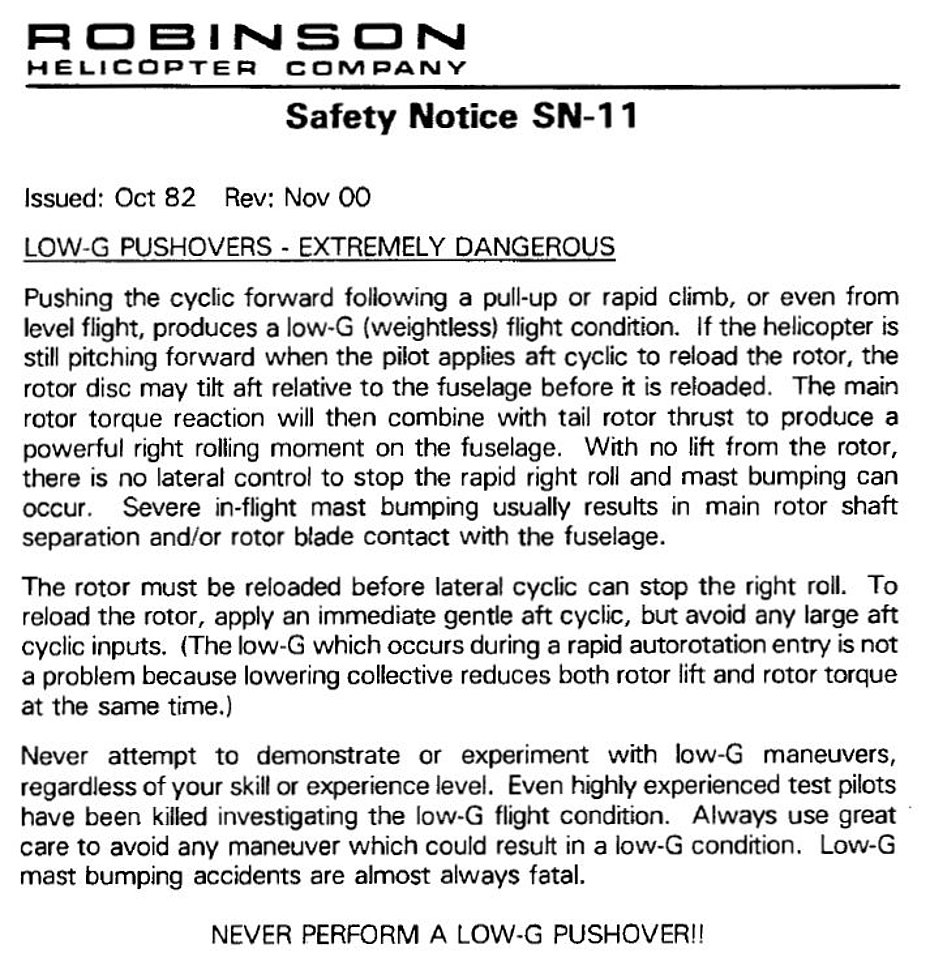
In Switzerland R22s (and later versions such as HP, Alpha, Beta, etc. that incorporate various improvements) have achieved good commercial success.
A few words about the mast-bumping
The rotor disk develops a force called lift which is opposed to weight.
As we know the normal value of the gravitational acceleration on the surface of the earth is one “g” positive, i.e. an average value of 9.8 m/sec, which corresponds in practice to the helicopter's weight.
During normal flight maneuvers the attitude of the helicopter obviously changes. The manufacturer in the flight manual establishes the operating limits of the helicopter to help the pilot operate the helicopter more safely. If these limits are voluntarily or unintentionally exceeded, the life of the occupants can run into serious dangers.
When the main rotor disk load is lower than one "g" a "low-g condition" occurs. This happens for example during a cruising flight when the pilot performs a sudden pushover or when a sudden turbulence temporarily reduces the force of gravity. In these circumstances there is an imbalance in the forces involved.
Low acceleration of gravity maneuvers create specific hazard for helicopters, especially those with semi-rigid main rotor systems because helicopters are designed to be suspended to the main rotor in normal flight with only small variations for positive “g” load maneuvers.
A matter of physics
In "low g" conditions since the lift vector is less than the vector of gravity, the moment of thrust generated by the tail rotor tends to make the fuselage of the helicopter to tilt to the left (in the case of helicopters with rotors turning left). The pilot instinctively tries to correct the roll by moving the stick to the right.
Since the rotor disk is partially unloaded and does not fully support the weight of the fuselage, at this point the roll increases until the rotor system reaches its structural limits. The coning hinge that connects the blade grip to the hub starts to bump against the mast. At each bump the mast is weakened and since the mast is hollow in extreme cases in a very short time a structural failure occurs.
The forces are such that the rotor hub components brake and the main rotor separates from the mast.
Therefore in "low-g" situations the pilot must first apply aft cyclic to restore a condition of balance between lift and weight and then correct the rolling movement. In helicopters equipped with a two-bladed rotor, mast-bumping can occur even when there is an important decay of the main rotor rpm below the minimum established by the manufacturer, or during slope landings.
Accidents in Switzerland
As it happened in other nations, following a series of serious incidents, in 1995 the Federal Office of Civil Aviation temporarily banned the flights with the Robinson R22/R44 series.
The measure was taken after a tragic accident occurred on December 27, 1994 in Zurich that involved the Robinson R22 Beta HB-XZW and caused the death of both occupants. That particular day, despite the weather being characterized by moderate to strong gusts of wind (at Zurich-Kloten airport the wind blew at 15 knots with gusts up to 26 knots and there existing a moderate danger of wind-shear, or a sudden change in the wind speed and direction), the pilot, holder of a PPL license who had an overall flight experience of 91 hours under his belt of which 21 on the Robinson R22, decided to rent the helicopter for a scenic flight. While crossing the city of Zurich the helicopter was observed by some witnesses to lose pieces and fall out of control.
According to the report of the Swiss Aircraft Accident Investigation Bureau (SAAIB) the accident was caused by the use of the helicopter outside of its operational envelope. This led to an in-flight breakup following a mast-bumping.
A too optimistic appreciation of the wind reports by the pilot was also indicated as casual factor in the accident.
A similar incident occurred on January 5, 1985 in Unterbeinwil/SO and involved the Robinson R22HP HB-XOC.
Even in that circumstance the two occupants (husband and wife) lost their lives.
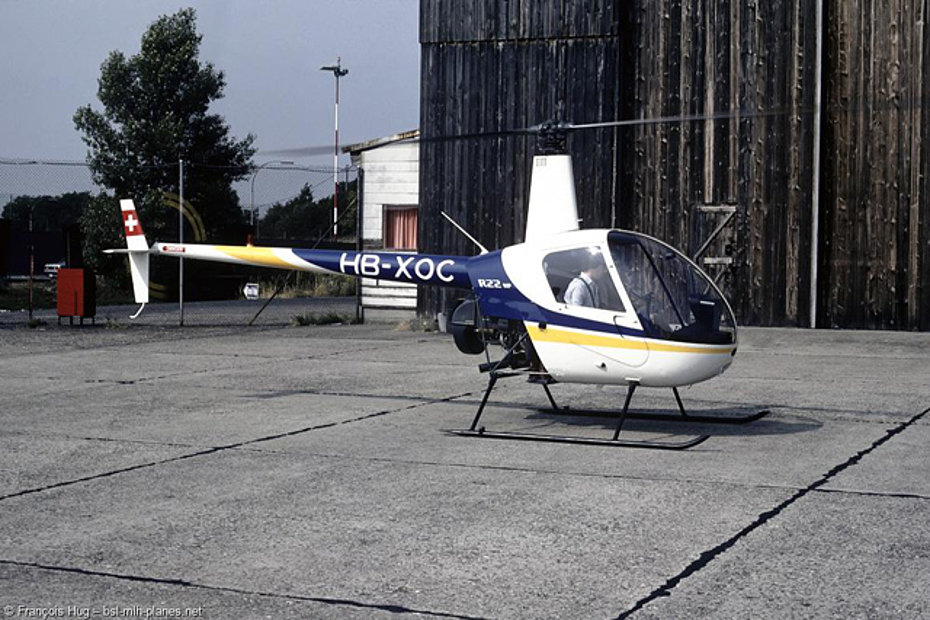
(François Hug - www.bsl-mlh-planes.net)
Despite the fact that in the region of the incident that day wind gusts up to 56 knots (103 km/h) were registered, the pilot with a flight experience of only 75 hours under his belt decided to take a pleasure flight!
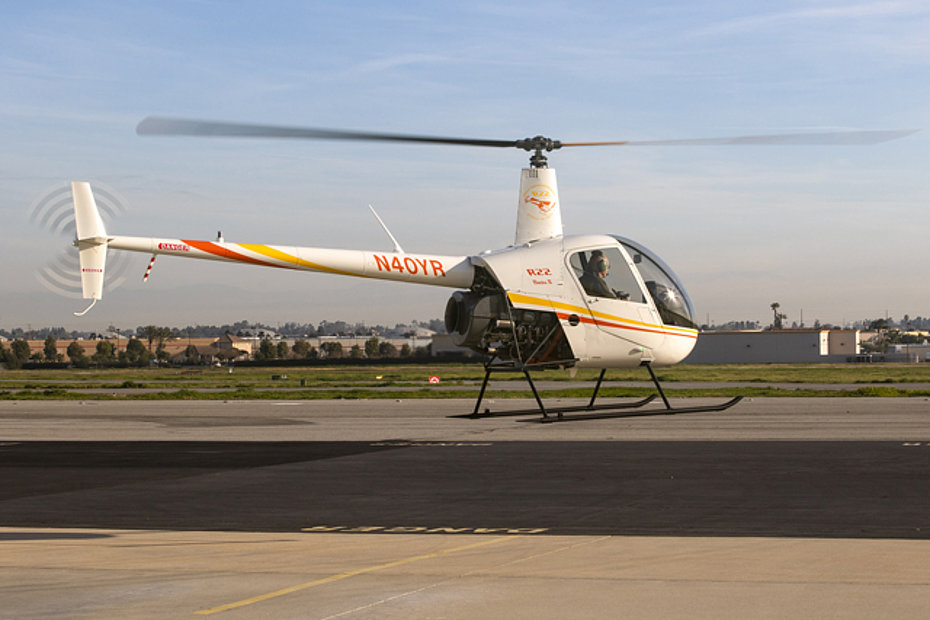
Interesting news – Nice to know
The Robinson R22 (s/n 002) N32AD flight tested to obtain civil certification is now preserved in the collection of the Smithsonian Air and Space Museum.
In the early 1980s the market’s request for R22s was so strong that the resale value of used aircraft was almost the same as that for new models.
On the occasion of the 40th anniversary of the introduction on the market of the R22, at the Heli-Expo held in Atlanta from 4 to 7 March 2019, the R22 with s/n 4997 and call sign N40YR was painted with the identical colors of the first prototype while the interior showcase modern avionics including the Avidyne IFD 440 GPS/COM with built in Wi-Fi and Synthetic Vision. The aircraft is also equipped with a pilot-side accessory bar designed to support personal electronic devices, e.g., iPhone or iPad.
A survey made in Australia in 2010 showed that the Robinson R22 fleet completes approximately 145,000 flight hours annually. Most of these, or 105,000, are carried out by the "flying cow-boys” during cattle mustering.
All life-limited components on more recent versions of the R22 are rated for 2,200 hours or 12 years of service. When the time between overhauls (TBO) expires, the helicopter is sent back to RHC for a complete overhaul as a single unit. The aircraft is stripped of all out-of-time components and thoroughly inspected for deficiencies. Then it’s integrated directly onto the production line and rebuilt with new components, including a factory-remanufactured engine from Lycoming. The finished overhaul product is indistinguishable from new helicopters leaving the line.
Interesting links
Have a look to the website of RHC:
https://robinsonheli.com/
For additional information on the mast-bumping watch this video:
https://www.youtube.com/watch?v=_QkOpH2e6tM
Special Training and Experience Requirements - SFAR 73
https://www.youtube.com/watch?v=RJ8SAnwxD6I&t=55s
HAB 04/2019


